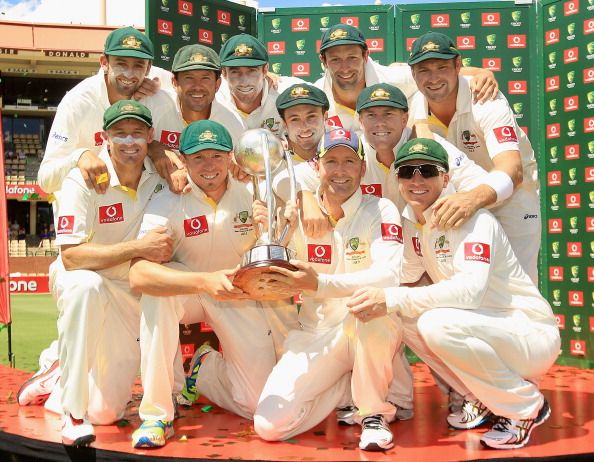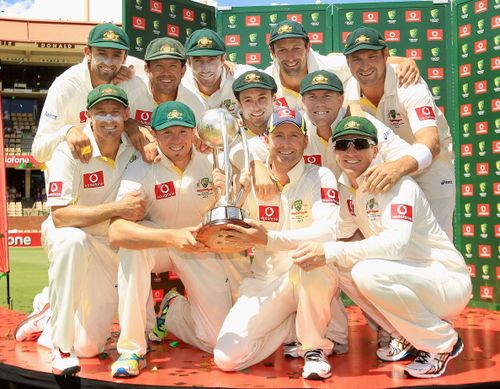
World Test Championship - a must!

Test cricket is regarded as the pinnacle of cricket, and the opinion that there should be a regular tournament in this format to decide upon the champion deserves all the credit in the world. ICC World Test Championship was unveiled by the ICC as a result. But, in a saddening development, this idea was later scrapped by ICC due to commercial reasons. In the first place, the Tournament should be reinstated, and with a changed format.
This format takes care that all the teams are given a level-playing field. In the proposed format, the World Test Championship will take place once every 6 years. The qualification to knockouts of ICC World Test Championship is being kept separate from the test rankings. Here, there will be a different points table, which will include the matches played in the 6-year qualification period. But there are certain conditions for the match to be included in the tournament points table. Maximum of 8 matches between the pair of teams will be included, 4 at either team’s home.
To clarify, let’s take an example: the marquee event, i.e. Ashes (between Australia and England). The first 4 matches between Australia and England in England will be included, and the first 4 in Australia will be included. The number of matches which they actually play may differ, and 4 matches can also be spread to a number of series. Here, the home team means the host team, i.e. the series hosted by Pakistan against Sri Lanka at UAE will count as Pakistan’s home game. Another major difference with the current system is that a team will be awarded equal number of points for a win/draw irrespective of the opposition.
In the current system, a team gets fewer points for a win against lower-ranked team as compared to a win against top team. Equal points system is important as all the marquee/high-profile tournaments rank a win as a win, irrespective of quality of opposition. Just to clarify that unlike the rankings system, where teams are ranked on the basis of average points per match, in this system, the teams will be positioned on the basis of total points earned by them. The points system will be as follows:
- Win – 16 points
- Loss – No points
- Draw with first innings lead – 9 points
- Draw with first innings trail – 7 points
- Draw without first innings lead result being achieved – 8 points
In addition to the above, there will 1st innings points, which will be retained by the team regardless of result of the match.
| Points | Batting Points | Bowling Points |
| 1 | 80 runs | 1 wicket |
| 2 | 160 runs | 3 wickets |
| 3 | 240 runs | 5 wickets |
| 4 | 320 runs | 7 wickets |
| 5 | 400 runs | 9 wickets |
For eg: Batting first Team A declared on 380-5, and Team B made 420 all out. Here Team A will get 9 points (4 points for scoring 380 runs and 5 points for taking 10 wickets), whereas Team B will get 8 points (5 points for scoring 420 runs and 3 points for taking 5 wickets) There is an additional rider in batting points. Teams will get points only for the runs scored in first 120 overs, while the bowling points will be given for wickets taken throughout the innings.
120 overs limit is placed to ensure that the pace is maintained in the match and teams do not play for a draw. At the end of qualification period, 3 teams with highest total number of points will progress to the World Test Championship. Should 2 teams finish on equal number of points, the following tie-breakers will be used:
- More number of wins.
- Less number of losses.
- The team which got more points in the matches played amongst them.
In World Test Championship, 3 teams will play round-robin with similar points structure as above, and the top 2 will progress to the mega-final. Every effort should be made so that the mega-final reaches to a result. This may include mulling on a timeless-test, i.e. a test which continues until a result is obtained. While it is not necessary for a team to play atleast 8 matches against a particular opposition, it will encourage them to play since they will be awarded additional points for those matches.
There will also be an incentive for so-called minnows, as the top teams will not back-out to play against them since the win for so-called top teams will yield them same number of points. Here, assuming that team plays 8 test matches against each opposition, a team will play 72 test matches in the 6-year period. This means a team will be encouraged to play atleast 12 test matches a year. Therefore, the proposed format will promote test cricket, and encourage the team to play evenly against all the oppositions. This may turn out to be a good step forward in the world of Test Cricket.